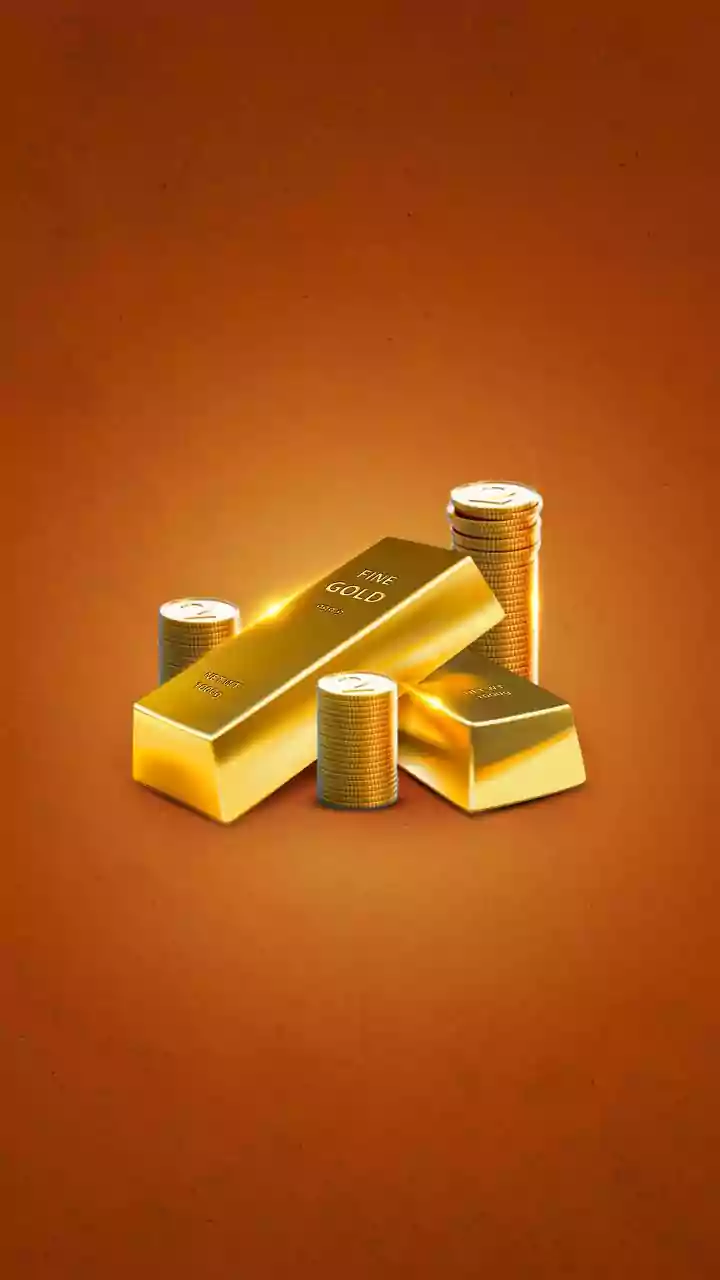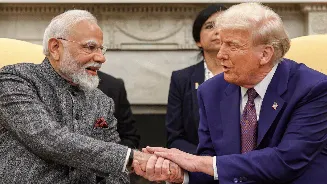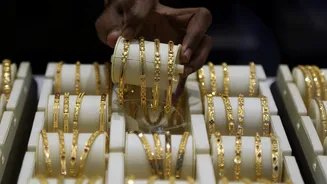What is the story about?
Indians snapped up record quantities of gold and silver in October, sending precious-metal imports soaring and sharply widening the country’s trade deficit.
Gold imports rose threefold to $14.7 billion in October from $4.2 billion a year earlier, while silver imports increased six times. Fuelled by strong festive-season demand, the surge pushed gold imports up 21 per cent in the April–October period to $41.2 billion, commerce secretary Rajesh Agrawal said.
The buying spree came at a cost: India’s trade deficit jumped to $41.7 billion in October, skewing the overall trade balance despite otherwise steady export performance.
A separate Commerce Ministry update on Monday (17 November, 2025) confirmed that a sharp surge in gold and silver shipments in October 2025 had driven the deficit higher, supported by pent-up demand, festive buying and industrial needs.
Gold imports climbed to $14.72 billion in October from $4.92 billion a year earlier, while silver shipments rose to $2.72 billion, compared with $0.43 billion in October 2024. The ministry said the spike followed a 25 per cent decline in imports in recent months, creating pent-up demand ahead of the festive season. Silver demand was further supported by industrial needs in solar panels, electronics, electric vehicles and pharmaceuticals.
The surge resulted in over $11 billion in additional imports, widening the monthly trade deficit. Over the first seven months of the financial year, the deficit has grown 11.76 per cent year on year.
Exports, however, stayed stable despite global uncertainty. Overall exports rose 4.84 per cent to $491.8 billion in April–October, with merchandise exports inching up 0.63 per cent and services exports growing 9.75 per cent. Non-petroleum merchandise exports increased 3.92 per cent during the period.
Exports to major markets strengthened, with shipments to the United States rising 10.15 per cent, led by electronics, engineering goods and pharmaceuticals, while exports to China increased 24.77 per cent.
The ministry said the Export Promotion Mission is expected to support MSMEs that have been grappling with volatile global demand.
On the trade policy front, India and New Zealand are “nearing the last phase” of FTA negotiations, though the final stage may take longer. Positive movement has also been reported in the India–ASEAN FTA review, with the next round slated for December.
Engagements with the United States continue, including discussions on reciprocal tariffs. The ministry noted that Washington’s decision to remove 50 per cent additional duties on several agricultural and processed-food items has levelled the playing field for Indian exporters. The list covers 254 products, including 229 agricultural items, representing more than $1 billion in US imports from India.
Brazil has also sought to expand the existing India–MERCOSUR PTA, with a joint administrative group set to meet to finalise the scope.
To ease financial pressure on exporters, the ministry said it is working to lower the cost of trade finance through interest subvention, an export credit card, and upcoming deep-tier financing mechanisms.
Gold imports rose threefold to $14.7 billion in October from $4.2 billion a year earlier, while silver imports increased six times. Fuelled by strong festive-season demand, the surge pushed gold imports up 21 per cent in the April–October period to $41.2 billion, commerce secretary Rajesh Agrawal said.
The buying spree came at a cost: India’s trade deficit jumped to $41.7 billion in October, skewing the overall trade balance despite otherwise steady export performance.
Ministry confirms sharp October spike
A separate Commerce Ministry update on Monday (17 November, 2025) confirmed that a sharp surge in gold and silver shipments in October 2025 had driven the deficit higher, supported by pent-up demand, festive buying and industrial needs.
Gold imports climbed to $14.72 billion in October from $4.92 billion a year earlier, while silver shipments rose to $2.72 billion, compared with $0.43 billion in October 2024. The ministry said the spike followed a 25 per cent decline in imports in recent months, creating pent-up demand ahead of the festive season. Silver demand was further supported by industrial needs in solar panels, electronics, electric vehicles and pharmaceuticals.
The surge resulted in over $11 billion in additional imports, widening the monthly trade deficit. Over the first seven months of the financial year, the deficit has grown 11.76 per cent year on year.
Exports remain steady
Exports, however, stayed stable despite global uncertainty. Overall exports rose 4.84 per cent to $491.8 billion in April–October, with merchandise exports inching up 0.63 per cent and services exports growing 9.75 per cent. Non-petroleum merchandise exports increased 3.92 per cent during the period.
Exports to major markets strengthened, with shipments to the United States rising 10.15 per cent, led by electronics, engineering goods and pharmaceuticals, while exports to China increased 24.77 per cent.
The ministry said the Export Promotion Mission is expected to support MSMEs that have been grappling with volatile global demand.
Trade negotiations gather momentum
On the trade policy front, India and New Zealand are “nearing the last phase” of FTA negotiations, though the final stage may take longer. Positive movement has also been reported in the India–ASEAN FTA review, with the next round slated for December.
Engagements with the United States continue, including discussions on reciprocal tariffs. The ministry noted that Washington’s decision to remove 50 per cent additional duties on several agricultural and processed-food items has levelled the playing field for Indian exporters. The list covers 254 products, including 229 agricultural items, representing more than $1 billion in US imports from India.
Brazil has also sought to expand the existing India–MERCOSUR PTA, with a joint administrative group set to meet to finalise the scope.
Steps to ease pressure on exporters
To ease financial pressure on exporters, the ministry said it is working to lower the cost of trade finance through interest subvention, an export credit card, and upcoming deep-tier financing mechanisms.
Do you find this article useful?




















